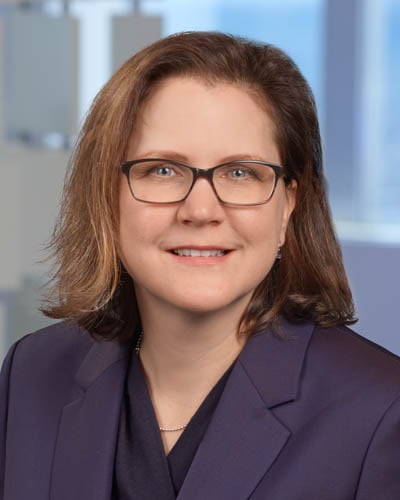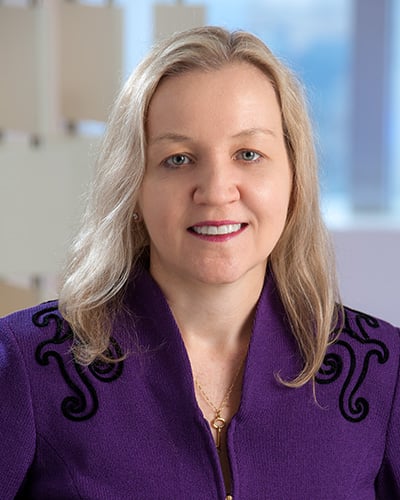In this Ropes & Gray podcast, health care partner Stephanie Webster and litigation & enforcement partner Jane Willis discuss a recent announcement by the DOJ Antitrust Division and the Office of Inspector General of Health and Human Services that the two enforcement agencies will increase their efforts to collaborate in connection with investigations of health care providers. They address how this announcement is part of a broader effort by the Biden Administration to aggressively enforce the antitrust laws, including using exclusion from federal health care programs as a remedy.
Transcript:
Stephanie Webster: Hello, and welcome to today's podcast. My name is Stephanie Webster and I'm a partner in Ropes & Gray's health care practice group. I represent a mix of hospitals, health systems, and other health care clients before federal agencies and in federal court on health care payment and compliance issues. I also generally help clients navigate ongoing developments in federal funding and reimbursement. With me today is Jane Willis, a partner in Ropes & Gray's litigation & enforcement group. Jane focuses on antitrust matters for health care and life sciences clients, including both litigation and mergers and acquisitions.
A couple weeks ago, we recorded a podcast about the Centers for Medicare and Medicaid Services (or CMS) recent rulemakings addressing competition and transparency in health care, including coordination between health care and antitrust authorities. We now have a further development to discuss with you. On December 9, the Justice Department’s Antitrust Division and the Department of Health and Humans Services Office of the Inspector General announced the signing of a memorandum of understanding (or MOU) that entails closer coordination on their enforcement efforts.
And just to start with a bit of background, as many of our listeners know, the HHS Office of the Inspector General (or OIG) is an independent, oversight agency with responsibility to the Secretary of Health and Human Services and to Congress. OIG has a variety of enforcement mechanisms, partnerships with Medicaid Fraud Control Units, corporate integrity agreements, civil and monetary penalties, and affirmative exclusions.
On the other hand, the Department of Justice Antitrust Division is set up to promote economic competition through enforcing and providing guidance on antitrust laws and principles. The Division prosecutes certain violations of the antitrust laws by filing criminal suits and civil actions. The Antitrust Division also acts as an advocate for competition in sectors of the economy that are, or may be, subject to government regulation, including importantly health care.
So, with all of that in mind, Jane, what are your thoughts on this latest announcement—do you find it surprising?
Jane Willis: In our prior podcast, we specifically discussed the Biden Administration’s focus on promoting competition—trying to do that across all agencies—and the Biden Administration is encouraging coordination among agencies. And this is really a prime example—here you have Jonathan Kanter, who’s the head of the Antitrust Division, and Christi Grimm, who’s the Inspector General, making this joint announcement. We previously discussed that Jonathan Kanter has a very ambitious agenda—he wants to bring more litigation and enforcement actions in the antitrust area. And he and others appointed by Biden recognize the value, again, of working across agencies. We previously saw that the HHS was taking steps to promote competition through some CMS rulemaking.
So, in my mind, this isn’t a surprise—it’s really a continuation of that same focus. This is interesting because the DOJ and the OIG each have their own areas of enforcement, but now they plan to identify issues in each other’s area, and refer those issues to the other agency as needed. Just for example, if the OIG is investigating a fraud and abuse matter, and they identify a potential antitrust issue, they’re going to refer that to the DOJ Antitrust Division, and vice versa.
Stephanie Webster: Jane, what do you think will change as a result of this new MOU that was just announced?
Jane Willis: A notable thing to me is the discussion of excluding health care providers from federal health care programs. I think of that as a remedy that’s used by the OIG, and that’s really the OIG’s authority. But here, Jonathan Kanter is making clear that he wants to use that remedy as really a penalty for criminal antitrust violations also. And the DOJ’s threat to do so, in collaboration with the OIG, is going to give the DOJ more leverage when they are investigating health care providers—for example, for price-fixing or wage-fixing, which can both be criminal violations. So, if a health care provider is subject to a criminal antitrust violation, the threat of exclusion from federal health care programs, like Medicare, raises the stakes even more.
Stephanie, can you tell the audience more about exclusions as a remedy to OIG uses?
Stephanie Webster: Sure, Jane. OIG has statutory authority to exclude certain individuals and entities from all Federal Healthcare Programs. This includes any plan or program that provides health benefits, either directly or indirectly, through insurance or otherwise, that is funded, again, directly, in whole or in part, by the United States Government or any state health care program.
As listeners are probably very much attuned to, an exclusion can be devastating to both individuals and entities excluded, and employers of those individuals who are excluded. As a result of exclusion, no federal payments can be made for any items or services rendered by an excluded person/entity, or at the medical direction or on the prescription of an excluded person/entity. And, excluded persons are prohibited from furnishing even administrative and management services that are payable by the Federal health care programs. If excluded individuals and entities do in fact furnish those services, the employer may incur a civil monetary penalty (CMP) of up to $10,000 for each item or service furnished by the excluded individual or entity and listed on the claim submitted for Federal program reimbursement, as well as an assessment of up to two-to-three times the amount claimed, and program exclusion may be imposed. So, the consequences are very severe.
Jane, with this in mind, as a practical matter, how would you expect the collaboration between OIG and DOJ’s Antitrust Division to be implemented?
Jane Willis: The OIG and the DOJ have always of course had the ability to refer investigations to the other agency. But here, with this collaboration, we see that they’re going to be taking some concrete steps—for example, each agency is going to designate an “agency liaison,” and the liaisons are going to meet periodically about the initiative. And importantly, the liaisons are in charge of setting up training programs, so the OIG staff will be trained to identify antitrust issues in their investigations, and the Antitrust staff will be trained to identify OIG issues, such as fraud and abuse.
So, I’m thinking that with more training—and now, really explicit instructions to look for other types of violations—it seems likely that more referrals between the agencies will occur. And I would be remiss if I didn’t point out that the Antitrust Division staff not only investigates conduct, but also does merger investigations as a part of the HSR process. So, the Antitrust Division would also be looking for fraud and abuse issues in the course of a merger investigation that’s brought to them by an HSR filing.
Stephanie Webster: That’s really interesting, Jane. Based on what you’re saying, it seems like health care providers need to be all the more vigilant about compliance across the range of issues handled by the OIG and the Antitrust Division, especially given the prospect of cross-referrals. So, the risk calculus is even more complicated than it was before, with exclusion risks having implications for antitrust negotiations with DOJ, and vice versa—so it seems like attorneys in the different areas are really going to need to coordinate.
Jane Willis: I agree. And another thing is that our respective teams here at Ropes & Gray need to be collaborating, as well. So, it’s important for our health care lawyers to be spotting antitrust issues and to consult with the antitrust team, and likewise, our antitrust lawyers need to keep a lookout for fraud and abuse issues.
Stephanie Webster: Exactly. And I’ve certainly appreciated the chance to work with you on this podcast, and this development highlights that need for collaboration between the health care regulatory & compliance and the antitrust counsel.
Thank you again for joining me today, Jane, and thanks to the audience for listening. And if those listening would like more information on this topic or our health care or antitrust groups, please don't hesitate to contact either one of us or visit our website at ropesgray.com. You can also subscribe and listen to other Ropes & Gray podcasts wherever you regularly listen to your podcasts, including on Apple and Spotify. Thanks again.
Stay Up To Date with Ropes & Gray
Ropes & Gray attorneys provide timely analysis on legal developments, court decisions and changes in legislation and regulations.
Stay in the loop with all things Ropes & Gray, and find out more about our people, culture, initiatives and everything that’s happening.
We regularly notify our clients and contacts of significant legal developments, news, webinars and teleconferences that affect their industries.




